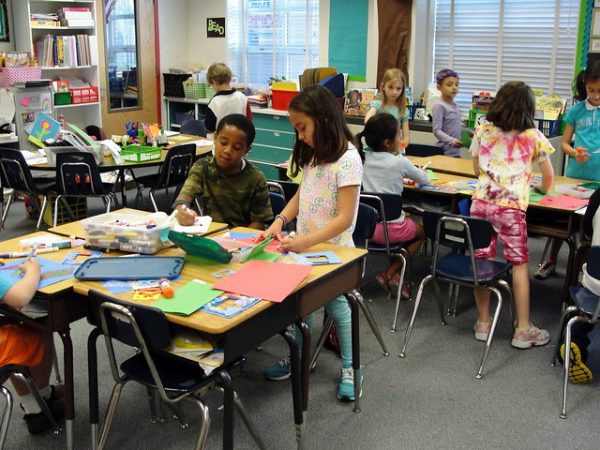Millions of students each year are suspended or expelled from school, sometimes in response to minor, non-violent policy violations such as skipping class and “disruptive behavior.” These harsh policies disproportionately push out students from disadvantaged backgrounds, especially youth of color. Much of the research on this topic focuses on middle and high school students. However, a new study by Wade Jacobsen, Garrett Pace, and Nayan Ramirez shows that a surprising number of urban students are already impacted by the third grade.
The researchers used data from several thousand children in 20 large American cities to document how many were suspended or expelled by age 9. Overall, 11% of children were removed from school at least once by this age. However, there were stark race and gender inequalities in elementary school discipline. Only 8% of white boys and 2% of white girls were suspended or expelled, compared with 40% of black boys and 15% of black girls.
Next, the researchers wanted to understand what factors are driving inequalities in early school discipline. They found that racial disparities were not due to differences in behavior reported by parents. Instead, disparities were mostly explained by school disciplinary practices and family background, such as poverty and parental incarceration.Exclusionary discipline is intended to punish and reduce aggressive behavior. However, the researchers showed that children who were suspended or expelled became more physically aggressive after they returned to school. They suggest that suspension and expulsion disrupt routines at home and cause children to fall behind at school, and this increased stress may lead to poor behavior.
While exclusionary discipline may sometimes be necessary to ensure student safety, there can be little disagreement that pushing kids out of schools when they are still learning to read is a practice that should be reconsidered. Finding effective alternatives to exclusionary discipline for non-violent behavior at an early age could improve racial equity in life-long educational outcomes.


Comments